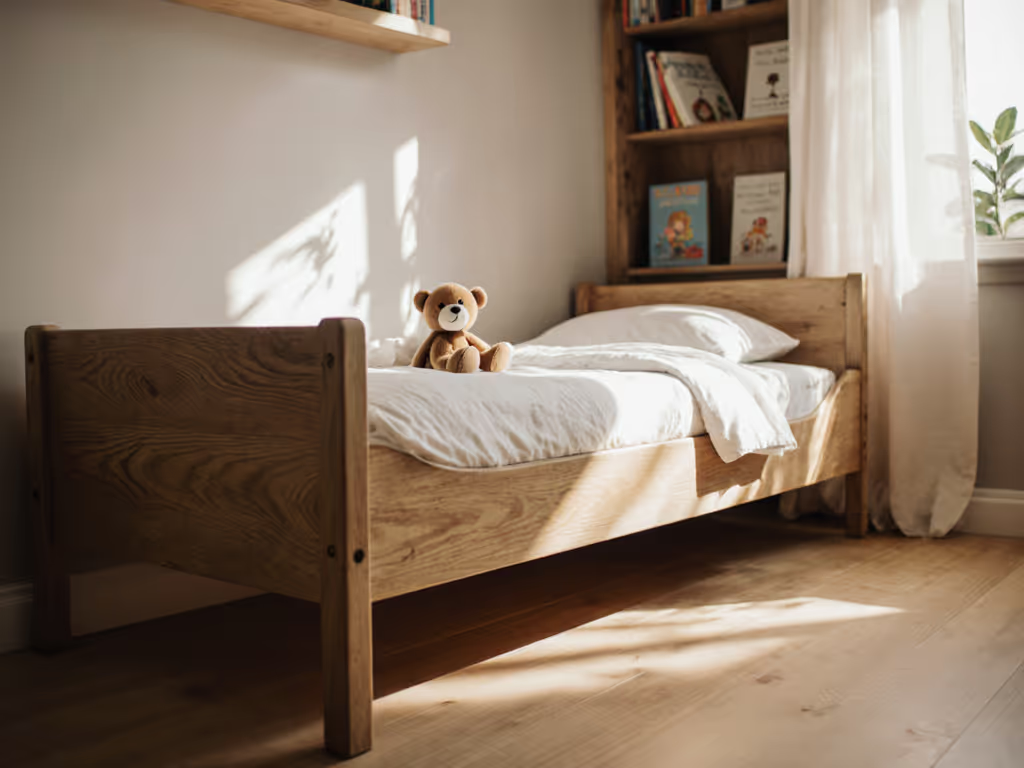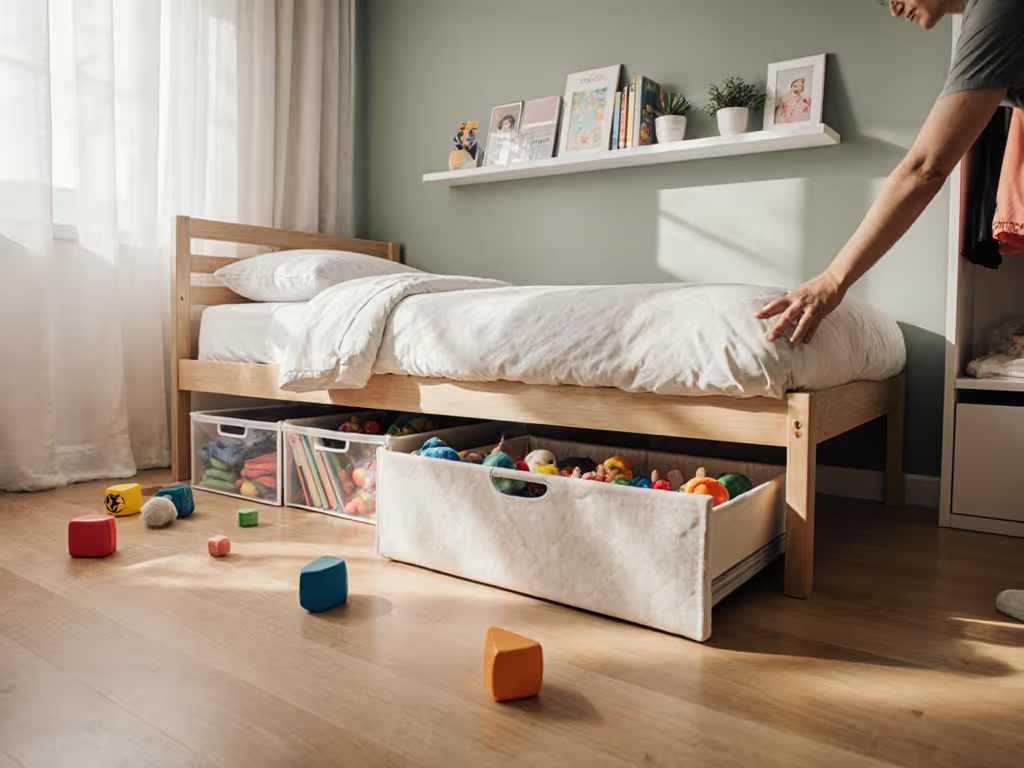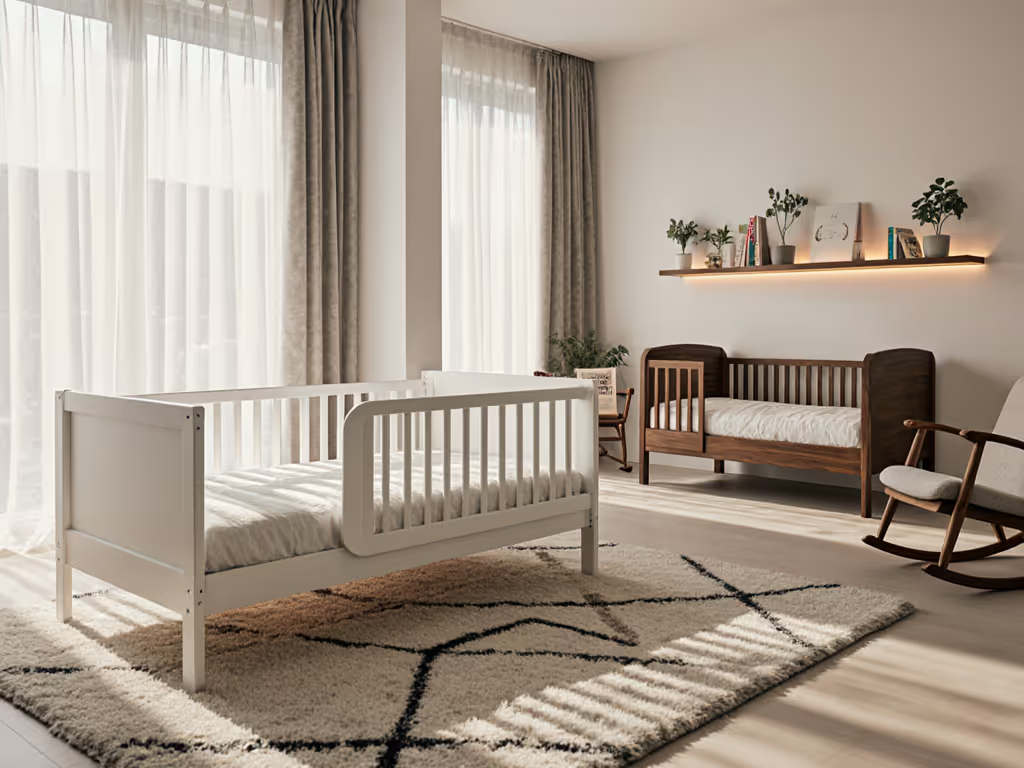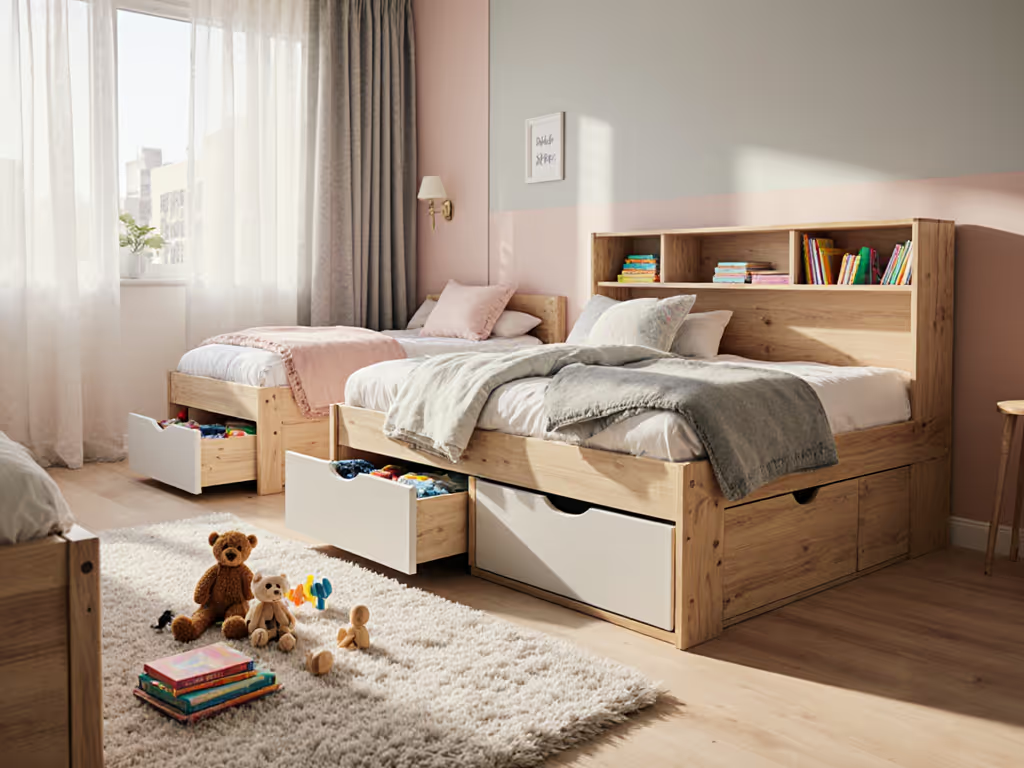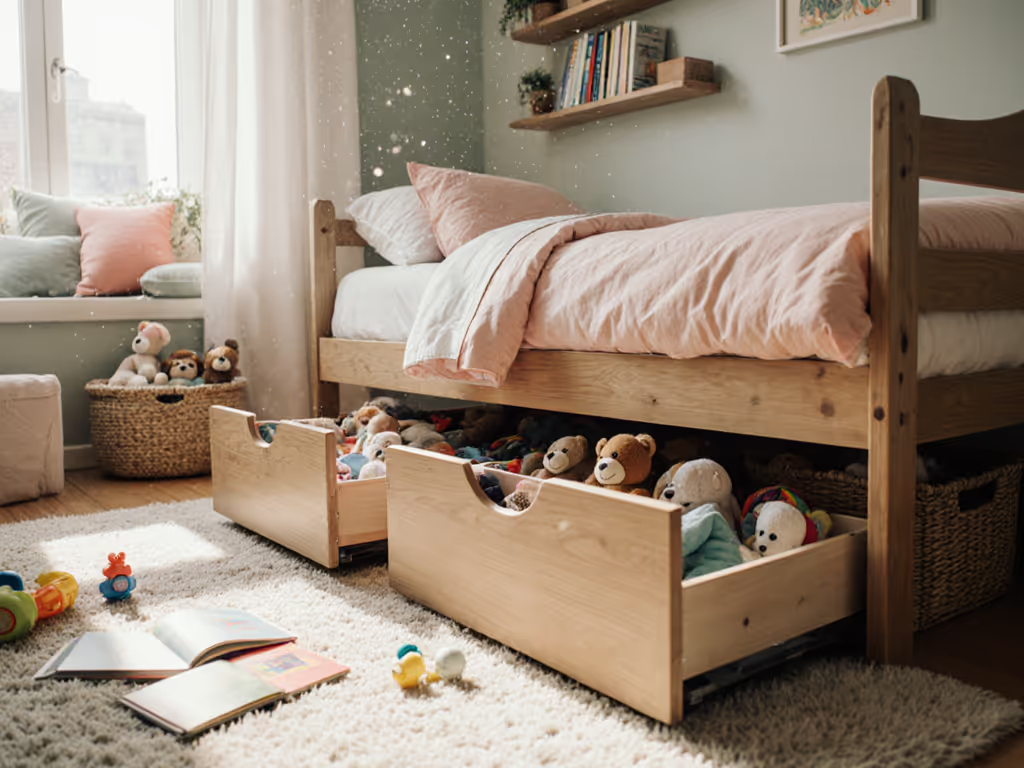
Complete Guide to Defining Convertible Toddler Beds
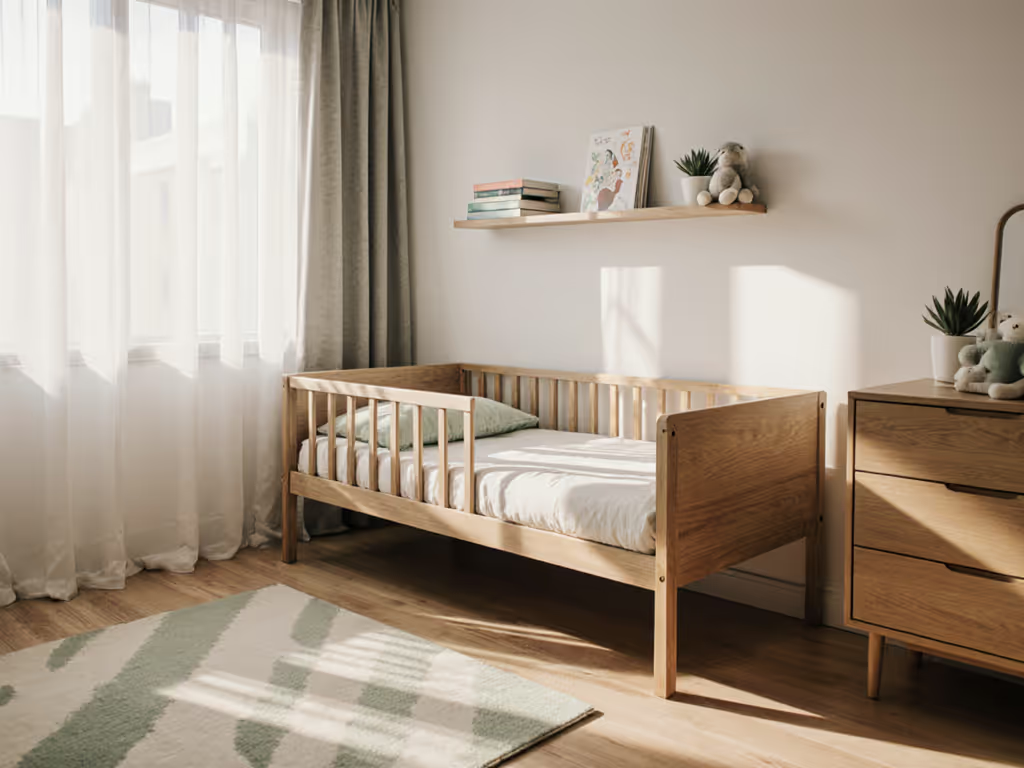
Complete Guide to Defining Convertible Toddler Beds
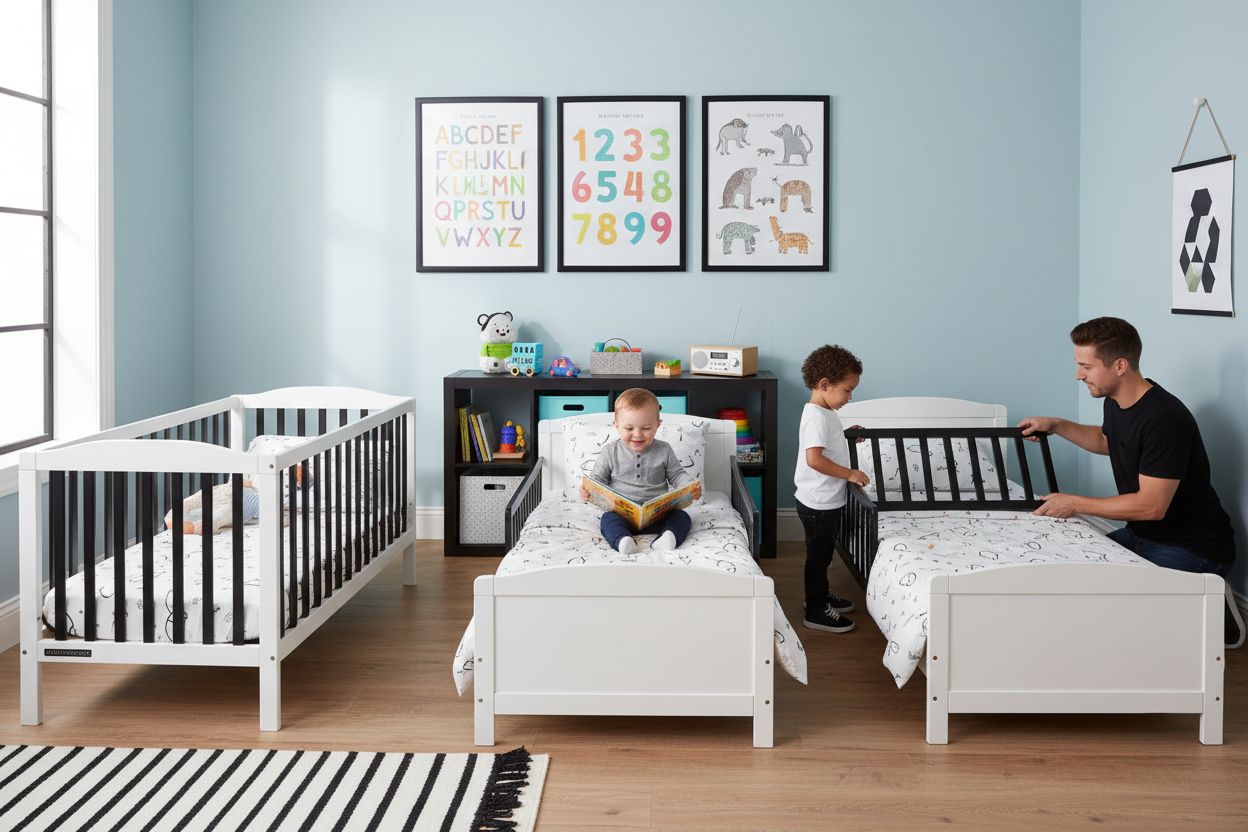
Did you know that a single convertible toddler bed can serve your child for up to 15 years? Many parents seek smart ways to adapt as kids quickly outgrow cribs and need safer, larger sleeping spaces. Convertible beds offer a flexible solution that keeps pace with your child's needs while making the most of limited room. With the right choice, families enjoy peace of mind, safety, and long-term value in one practical package.
Key Takeaways
| Point | Details |
|---|---|
| Adaptable Design | Convertible toddler beds evolve with your child's growth, offering multiple configurations to accommodate developmental needs. |
| Safety Standards | These beds adhere to rigorous safety regulations, ensuring structural integrity and safe transition features for young children. |
| Space-Saving Solution | The modular nature of convertible beds reduces the need for multiple purchases, optimizing living space in smaller homes. |
| Multi-Generational Utility | Convertible beds can serve a child from infancy through the teenage years, providing a long-term investment for families. |
Table of Contents
- Convertible Toddler Beds: Core Definition And Concepts
- Types Of Convertible Toddler Beds Explained
- Key Features And Space-Saving Benefits
- Safety Standards And Material Considerations
- Transitioning From Crib To Convertible Bed
- Comparing Convertible Beds To Toddler Alternatives
Convertible Toddler Beds: Core Definition and Concepts
A convertible toddler bed represents a strategic sleep solution designed to evolve alongside your child's growth journey. Specifically defined by the Consumer Product Safety Commission (CPSC), these beds are precisely sized to accommodate a full-size crib mattress, measuring approximately 51 5/8 in × 27 1/4 in, and intended for children between 15 months and 50 pounds.
The core concept of a convertible toddler bed centers on adaptability. Unlike traditional beds that become obsolete as children grow, these innovative sleep spaces transform to meet changing developmental needs. Key features typically include:
- Removable side rails for safe transitioning
- Adjustable frame configurations
- Sturdy construction meeting ASTM F1821 safety standards
- Design allowing seamless conversion between bed types
Safety remains paramount in convertible bed design. The ASTM F1821 consumer safety specification meticulously covers critical elements such as:
- Structural integrity
- Guardrail requirements
- Mattress support specifications
- Small parts prevention
- Comprehensive labeling guidelines
Want to explore more about optimizing your toddler's sleep space? Check out our guide on space-saving bed layouts for creative solutions that grow with your child.
Types of Convertible Toddler Beds Explained
Convertible toddler beds represent an innovative approach to children's furniture, offering multi-functional bed systems that adapt seamlessly through multiple developmental stages. These versatile sleep solutions typically come in three primary configurations: 3-in-1, 4-in-1, and 5-in-1 designs, each providing unique transformation capabilities to match your child's evolving needs.
Key Convertible Bed Configurations
Here's a comparison of the main convertible toddler bed configurations:
| Bed Type | Stages Included | Typical Materials | Max Adaptability |
|---|---|---|---|
| 3-in-1 Convertible | Crib<br>Toddler Bed<br>Daybed | Solid Wood<br>Composites | Moderate |
| 4-in-1 Convertible | Crib<br>Toddler Bed<br>Daybed<br>Full-Size Bed | Solid Wood<br>Metal | High |
| 5-in-1 Convertible | Crib<br>Toddler Bed<br>Daybed<br>Full-Size Bed<br>Desk/Chair | Solid Wood<br>Eco-Friendly Materials | Maximum |
3-in-1 Convertible Beds generally transition through these stages:
- Standard crib
- Toddler bed with side rails
- Daybed configuration
4-in-1 Convertible Beds offer an additional transformation:
- Standard crib
- Toddler bed with side rails
- Daybed configuration
- Full-size bed frame
5-in-1 Convertible Beds provide maximum flexibility, often including unique configurations such as:
- Standard crib
- Toddler bed
- Daybed
- Full-size bed
- Optional desk or chair conversion
Design materials play a crucial role in these transformative beds.
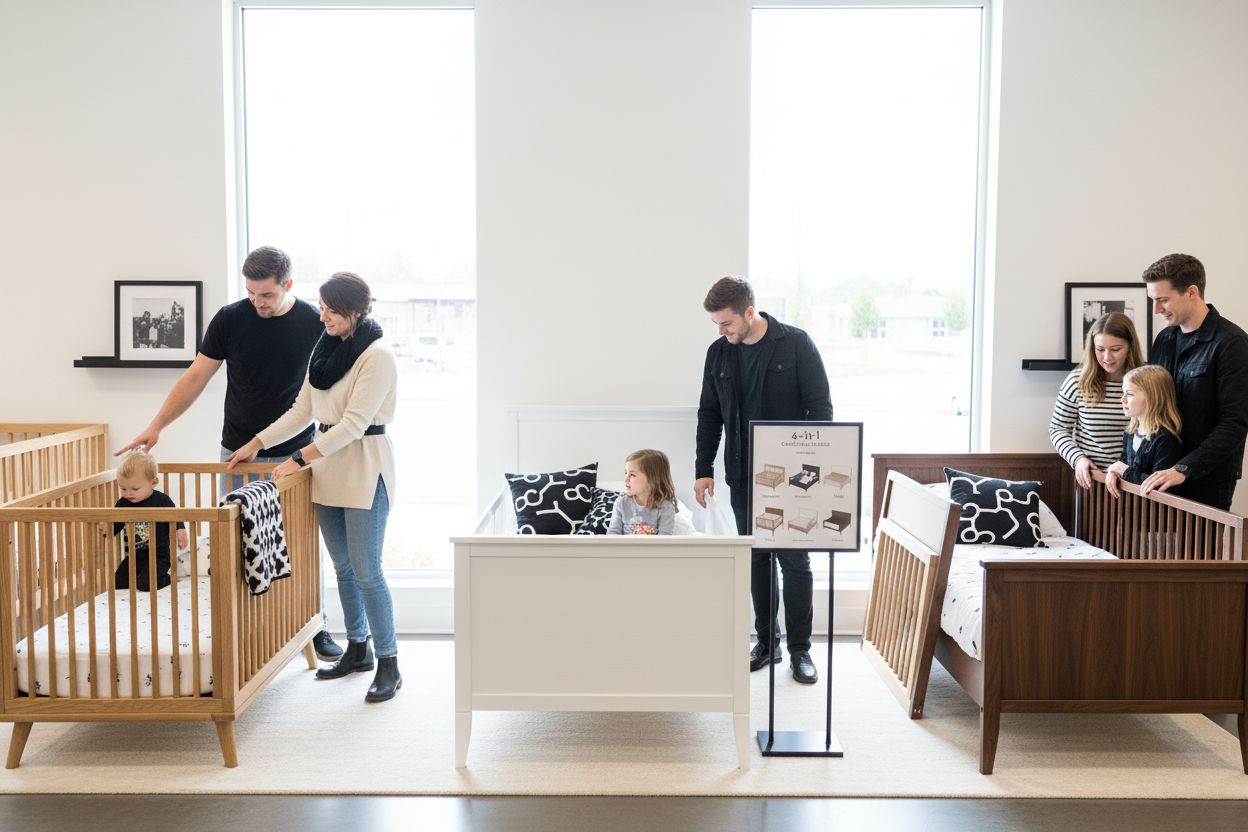 Manufacturers typically construct these systems using:
Manufacturers typically construct these systems using:
- Solid wood
- Engineered wood composites
- Metal frame structures
- Eco-friendly sustainable materials
Safety remains paramount, with top models meeting rigorous certification standards including JPMA (Juvenile Products Manufacturers Association), ASTM (American Safety Testing Materials), and CPSC (Consumer Product Safety Commission) guidelines.
Interested in discovering the most adaptable options for your growing child? Explore our comprehensive guide to the best convertible cribs that maximize both safety and value.
Key Features and Space-Saving Benefits
Convertible toddler beds are more than just a sleeping solution—they're a strategic investment in your child's evolving living space. Space optimization becomes critical for modern families navigating smaller homes, apartments, and shared bedroom environments. These innovative beds transform seamlessly, eliminating the need for multiple furniture purchases as your child grows.
Core Space-Saving Features
The primary space-saving advantages include:
- Eliminates need for multiple bed purchases
- Reduces furniture footprint
- Provides modular configurations
- Adapts to changing room layouts
- Minimizes long-term furniture expenses
Functional Design Elements
Key functional features that maximize space efficiency include:
- Removable side rails
- Adjustable mattress height settings
- Compact frame designs
- Potential additional storage configurations
- Lightweight, easily movable structures
Parents appreciate convertible beds for their multi-generational utility. A single bed can serve from infancy through early childhood, potentially transitioning into a full-sized bed that accommodates growing teenagers. This remarkable adaptability means one furniture piece can potentially serve your child for 10-15 years.
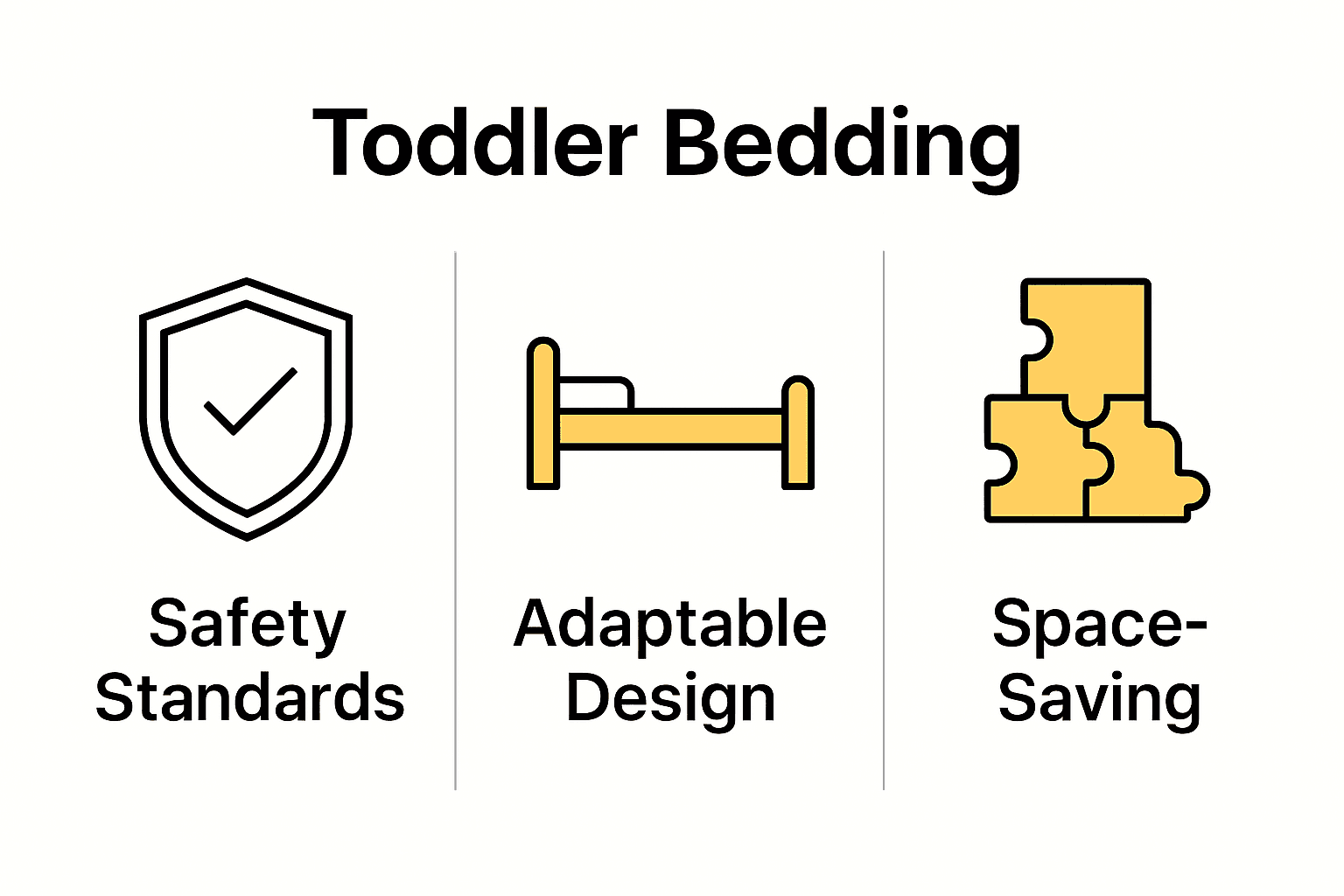
Discover ingenious space-saving bed solutions for compact bedrooms that maximize every square inch of your child's living space.
Safety Standards and Material Considerations
Navigating the world of toddler bed safety requires understanding complex regulatory landscapes and material science. Safety isn't just about design—it's about creating a secure sleeping environment that protects your most precious asset: your child.
Critical Safety Standards
Multiple regulatory bodies establish rigorous safety protocols for toddler beds:
- ASTM F1821: US primary safety standard
- CPSC: Consumer Product Safety Commission regulations
- JPMA: Independent certification program
- International Standards: Europe's EN 716, Australia's AS/NZS 2172
Key safety specifications include:
- Maximum slat spacing (2.375 inches)
- Precise guardrail height requirements
- Mandatory non-toxic material usage
- Structural integrity testing
Material Quality and Chemical Safety
Material selection represents a critical safety consideration. Manufacturers now prioritize:
- Solid hardwoods (maple, birch) for structural integrity
- NAF/CARB Phase 2 engineered woods
- Lead-free and phthalate-free coatings
- Water-based, VOC-free finishes
Parents should look for beds that not only meet but exceed standard safety requirements. Chemical emissions, wood sourcing, and manufacturing processes all contribute to creating a truly safe sleeping environment.
Learn more about comparing wooden and metal toddler bed safety standards to make an informed decision for your child's bedroom.
Transitioning from Crib to Convertible Bed
The journey from crib to toddler bed represents a significant milestone in your child's development. Transition timing is critical, typically occurring between 18 and 36 months when children demonstrate specific readiness signs like attempting to climb out of the crib or showing increased independence during potty training.
Readiness Signs and Preparation
Key indicators that your child might be ready for a convertible bed include:
- Consistently climbing out of the crib
- Showing interest in big-kid beds
- Demonstrating improved motor skills
- Potty training progress
- Expressing desire for more independence
Safety Transition Checklist
Ensuring a safe transition involves several crucial steps:
- Inspect conversion kit hardware thoroughly
- Check for potential entrapment gaps
- Ensure guardrails are securely installed
- Verify mattress fits snugly within frame
- Remove any potential falling hazards near the bed
Potential Transition Challenges
Parents should be prepared for potential challenges such as:
- Nighttime wandering
- Difficulty staying in bed
- Anxiety about new sleeping arrangements
- Potential sleep disruptions
Consistent routine and positive reinforcement can help make this transition smoother for both parent and child. Creating a sense of excitement about the "big kid" bed can transform this potentially stressful change into an empowering experience.
Explore our comprehensive guide on sleep transition strategies to help your toddler adapt to their new sleeping environment seamlessly.
Comparing Convertible Beds to Toddler Alternatives
Choosing the right sleeping solution for your toddler involves understanding the nuanced differences between convertible beds and alternative options. While each alternative offers unique benefits, convertible beds stand out for their long-term adaptability and comprehensive design approach.
Bed Alternatives Comparison
Key toddler sleeping alternatives include:
- Traditional Toddler Beds: Fixed design, limited lifespan
- Travel Cots: Portable, temporary sleeping solutions
- Floor Mattresses: Minimalist approach for independent sleepers
- Futon-Style Beds: Low-profile sleeping surfaces
- Montessori Floor Beds: Emphasizing child independence
Comparative Advantages of Convertible Beds
Convertible beds offer distinct benefits over alternatives:
- Multi-stage usability
- Cost-effective long-term investment
- Consistent sleep environment
- Built-in safety features
- Seamless transition between developmental stages
Practical Considerations
While travel cots provide portable convenience, they lack the structural integrity and long-term value of convertible beds. These compact alternatives work well for temporary situations but cannot replace a dedicated sleeping solution that grows with your child.
The primary differentiator remains adaptability. Convertible beds transform from infant cribs to full-sized beds, providing a consistent, familiar sleeping space that supports your child's developmental journey.
Discover the best convertible toddler beds that maximize long-term value for your growing family.
Transform Your Toddler’s Sleep Space with Confidence
Do you worry about making the right choice as your child moves from crib to toddler bed? Many parents feel overwhelmed with questions about safety, adaptability, and space limitations. The article "Complete Guide to Defining Convertible Toddler Beds" reveals just how many features, standards, and options exist. Picking a bed that balances long-term value, eco-friendly materials, and safe design can seem impossible. When your living space is tight or your child is ready to climb out of the crib, these concerns become even more urgent.
Visit our main site for in-depth solutions and trusted recommendations tailored for parents facing these very challenges. Discover additional guides on space-saving bed layouts or compare real-world options for best convertible toddler beds. Take the next step to upgrade your child’s sleep environment today. Your peace of mind starts with a single click.
Frequently Asked Questions
What is a convertible toddler bed?
A convertible toddler bed is a sleep solution that adapts as your child grows, typically designed to fit a standard crib mattress and accommodate children from 15 months up to 50 pounds.
What are the key features of convertible toddler beds?
Convertible toddler beds often include removable side rails, adjustable frame configurations, sturdy materials that meet safety standards, and the ability to transform between different bed types such as cribs, toddler beds, and daybeds.
How do I know when my child is ready to transition to a convertible bed?
Signs of readiness typically include consistently climbing out of the crib, showing interest in big-kid beds, and demonstrating improved motor skills. This transition usually occurs between 18 to 36 months of age.
What safety standards should I look for in a convertible toddler bed?
Look for beds that meet safety standards set by ASTM (American Safety Testing Materials) and CPSC (Consumer Product Safety Commission), including specifications for structural integrity, guardrail height, and non-toxic material usage.

